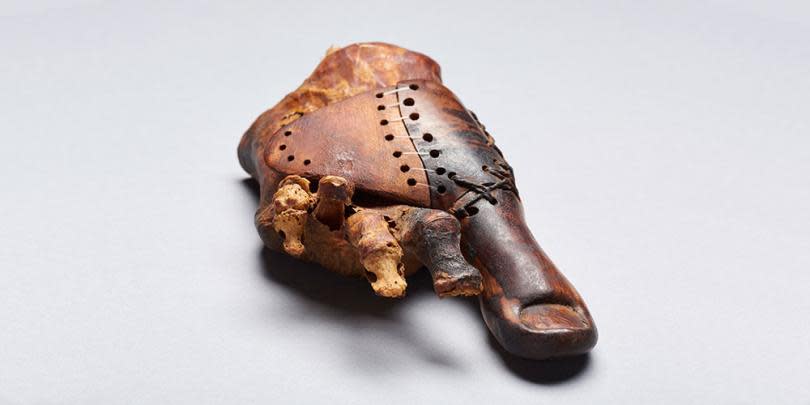This Ancient Wooden Toe Is A Weird Archaeological Find
What is the oldest prosthetic body part in history? Probably a wooden toe from ancient Egypt, archaeologists say. And it can teach us a lot about that dead civilization.
The University of Basel dated the artificial toe to about 3,000 years ago and belonged to the daughter of a priest, who was buried in a tomb near the modern city Luxor along the Nile River.
Luxor was the site of the ancient capital city Thebes where you can still see the Luxor and Karnak temples, as well as the royal tombs called the Valley of the Kings and the Valley of the Queens.
Read: Ancient Chinese Kept POWs As Slaves, Then Made Them Human Sacrifices
Scientists are taking a closer look at the fake big toe using technology like CT scans, which snap numerous X-ray images from different angles to create a 3D digital version of the object that also offer cross-sections to give a look inside.
The pictures suggest the toe “was refitted several times to the foot of its owner,” the university said, by a skilled “artisan who was very familiar with the human physiognomy.” It noted the wooden digit could move well and was attached to the rest of the foot with a strap.
That intricate design says something about the woman who wore it through her life: “The fact that the prosthesis was made in such a laborious and meticulous manner indicates that the owner valued a natural look, aesthetics and wearing comfort, and that she was able to count on highly qualified specialists to provide this.”

A prosthetic toe made of wood was found buried with a priest’s daughter in the Theban tomb in Egypt. Photo: Matjaž Kačičnik/University of Basel

Archaeologists excavating this area in Egypt at the site of the ancient capital city Thebes have investigated numerous artifacts, including a wooden prosthetic toe. Photo: Matjaž Kačičnik/University of Basel
The tomb where this prosthetic toe was found is part of a larger burial site that was used for upper-class people who were within the royal family’s inner circle — a burial site archaeologists have been studying for years and for which the Basel group is using new tech like the CT scans to learn more about the materials in buildings and artifacts. Doing so might offer some insight into the people who lived in this famous ancient civilization, both in terms of how they manufactured goods and their culture.
Although many centuries have passed since ancient Egypt fell, scientists are still digging up artifacts, mummies and even pyramids. In April authorities announced they had found the hidden ruins of a pyramid from about 3,700 years ago near the famous Bent Pyramid, known for a lower half with a steeper slope than its top half. Last month, archaeologists dug up 17 new mummies in catacombs near Cairo, a network of underground burial shafts, as well as numerous ancient documents.
Read: Ancient American Artifacts Show Advanced Prehistoric Culture
Scientists also are learning more about the ancient Egyptians through genetic analysis. Recent tests show that the people in that society were much more genetically Asian than their modern counterparts, who have more African DNA. And genetic analysis on cats throughout history has shown the ancient Egyptians were one of the first societies to domesticate wild cats, specifically the African wildcat species, and turn them into house pets.
Related Articles


